Forearm Workout With Dumbbells: Exercise and Program
Example Dumbbell Forearm Workout
The following sample workout may be tacked onto an already existing training program, but is also perfectly effective when performed on its own.
The program features 3 separate workout sessions meant to be performed with one day of recovery in between. After the requisite cycle has been completed, a two day long recovery period is advisable.
Workout 1:
Dumbbell Wrist Curls - 3x10
Dumbbell Reverse Wrist Curls - 2x12
Dumbbell Pinches - 2 sets
Workout 2:
Dumbbell Reverse Wrist Curls - 3x10
Dumbbell Wrist Curls - 2x12
Dumbbell Pinches - 2 sets
Workout 3:
Dumbbell Reverse Grip Bicep Curls - 3x8
Dumbbell Hammer Curls - 3x8
Dumbbell Farmers Walks - 3 sets
Dumbbell Forearm Workout - Exercise Choice
Because of the different mechanics in which each muscle group is used, at least three separate exercises will be needed for a truly comprehensive forearm workout.
We’ve listed them below.
1. Dumbbell Wrist Curls
The first and most quintessential example of a dumbbell forearm exercise is the wrist curl.
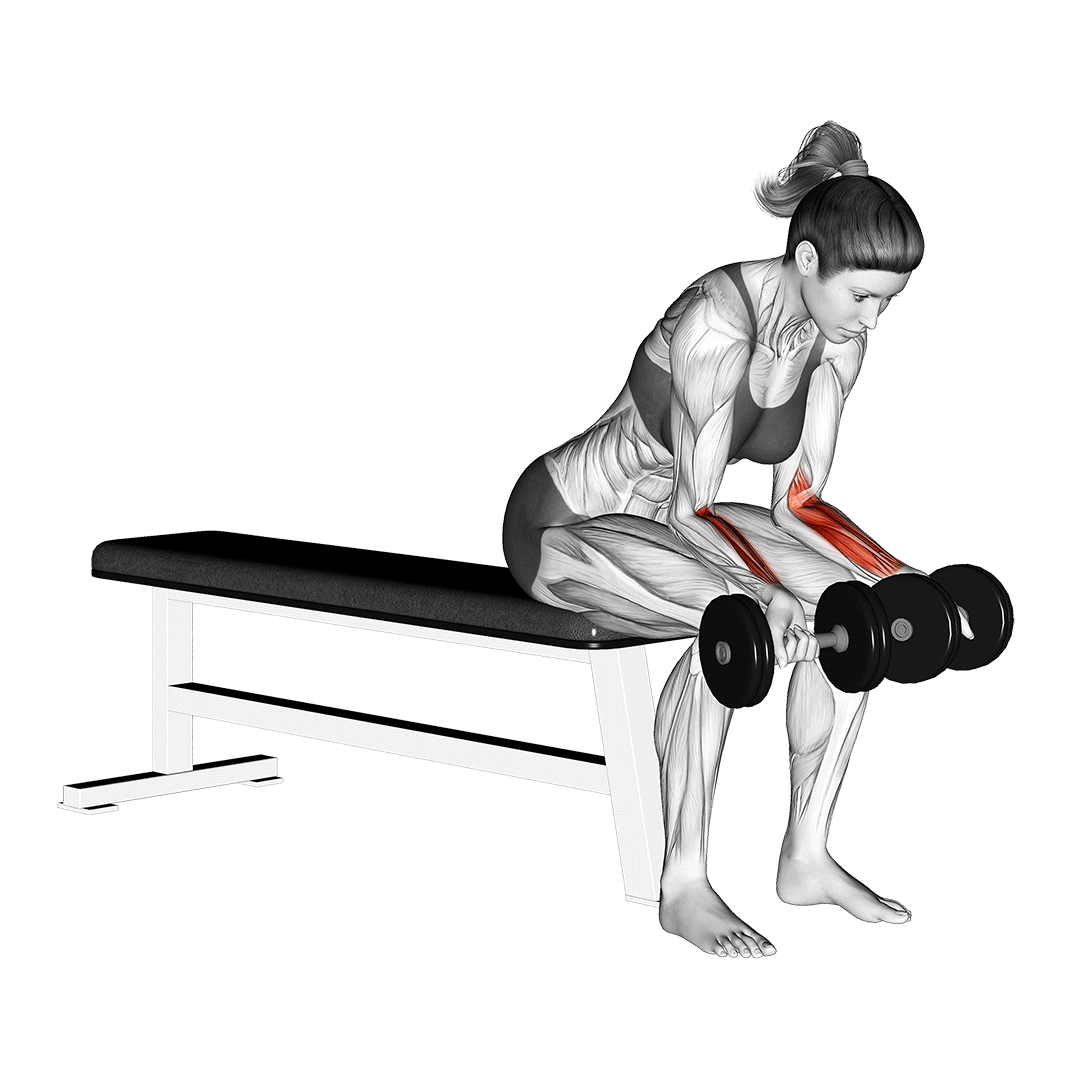
Dumbbell wrist curls target the flexor muscles of the forearm, and are considered to be a single-joint isolation exercise.
Unlike most other exercises listed in this article, the wrist curl is meant to be performed with only a moderate amount of weight at most. Because of the risk of developing overuse injuries of the wrist, we advise beginning with the lowest effective amount of weight possible.
Muscles Worked
As previously mentioned, dumbbell wrist curls target the forearm flexor muscles.
Benefits as a Forearm Exercise
The primary advantage of dumbbell wrist curls is in their simplicity. They can be performed with a low amount of weight, require no advanced exercise knowledge and are easy to include into any type of program.
In addition, the wrist curl is one of the few exercises capable of isolating the forearm flexors with high volume and a lengthy time under tension.
How-to:
Sitting in a comfortable position with a dumbbell held in their hand, the lifter will rest the same hand atop their knee, palms up. The wrist should be supported atop the knee for stability.
Now in the correct stance, the lifter will contract the muscles of their forearms and curl the dumbbell upwards - stopping once at the limit of their range of motion.
To complete the repetition, they will simply return their hand back to its original position.
2. Palms-Down Dumbbell Wrist Curls
Also known as a reverse wrist curl, the palms-down dumbbell curl is often used as a complement to the conventional palms-up wrist curl, as it is the immediate opposite movement.
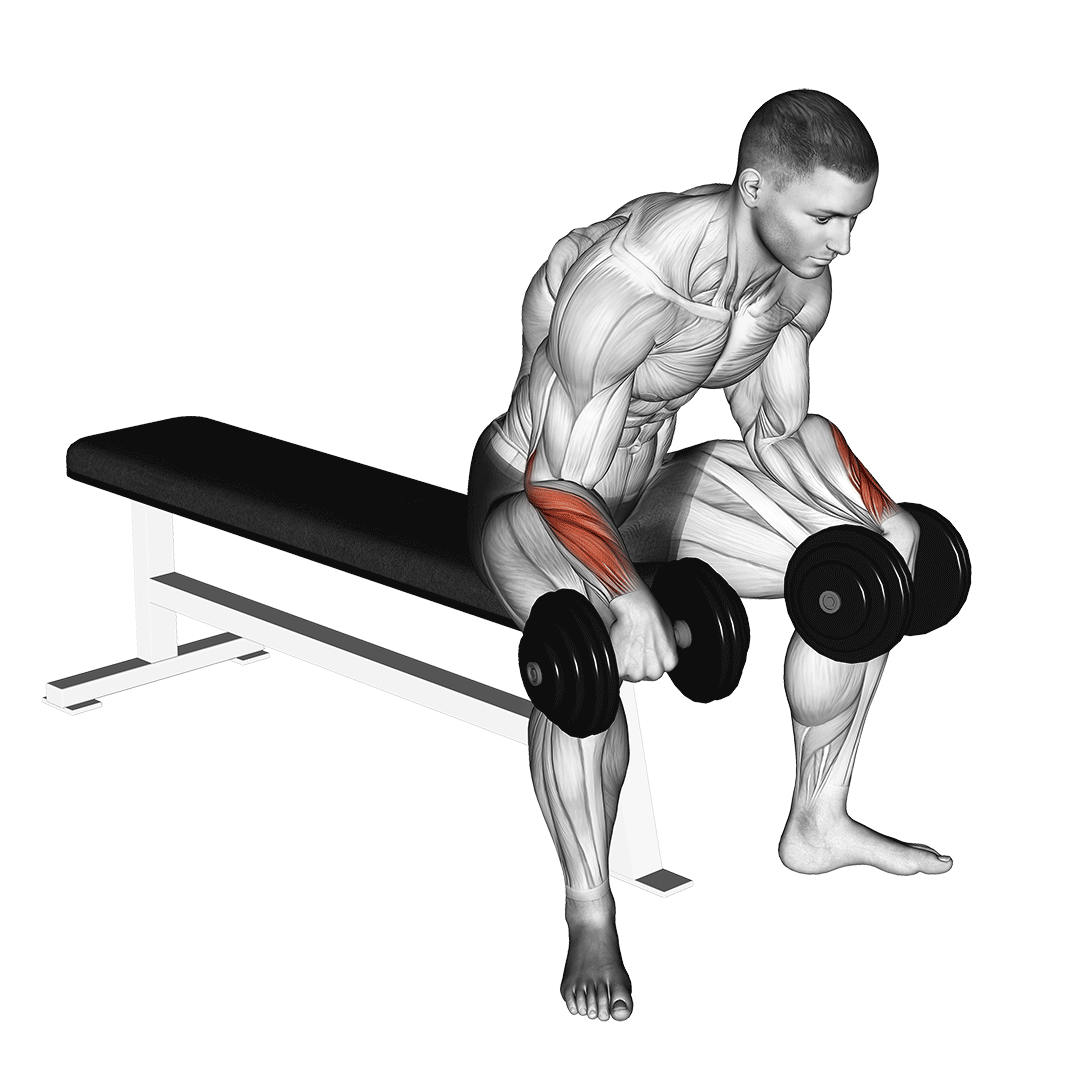
Like its palms-up counterpart, the reverse wrist curl is an isolation exercise that makes use of a single joint to dynamically work a section of the forearms - that being the extensor muscles.
Muscles Worked
The palms-up wrist curl targets the forearm extensor muscles.
Benefits as a Forearm Exercise
The reverse wrist curl is both accessible and likely one of the few movements that directly targets the extensor muscles with significant volume.
In a similar vein to the conventional wrist curl, the reverse wrist curl is easy to program, simplistic in form and can generally be included into any sort of workout program.
How-to:
To perform a palms-down dumbbell wrist curl, the lifter will grip a moderately heavy dumbbell in one hand while in a seated position.
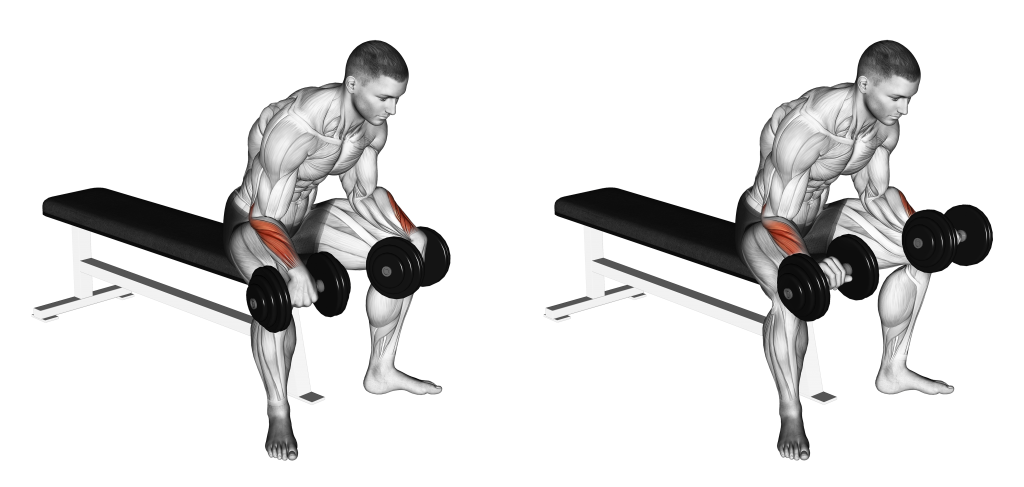
Placing the wrist palms-down atop the knee, the lifter will then raise their hand as far backwards as it will go, squeezing the forearm muscles as they do so.
Once at the limit of their range of motion, they will return their hand back to its original neutral position - thereby completing the repetition.
3. Dumbbell Reverse Bicep Curls
Although not quite a solely forearm-focused exercise, the dumbbell reverse curl is nonetheless excellent for developing the largest muscle of the forearms - the brachioradialis.
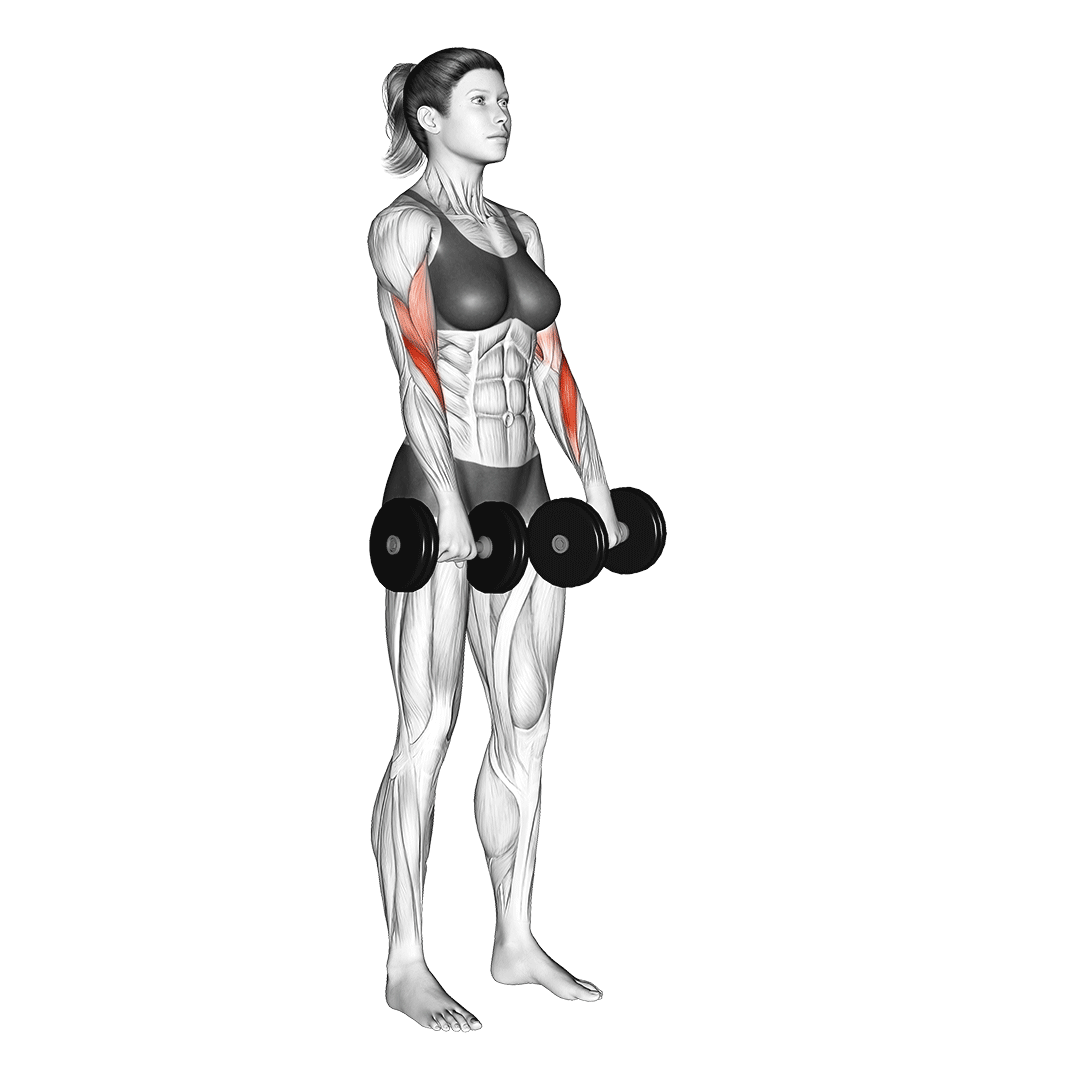
The reverse bicep curl is a single joint isolation exercise intended to be performed with a low-to-moderate amount of weight per set.
As the name implies, reverse bicep curls are mechanically similar to a bicep curl where the forearms are flexed at the elbow. However, instead of an underhand grip, the dumbbell will be held with the hands in a pronated orientation.
This change in grip allows the exercise to shift focus from the biceps brachii to the muscles of the forearms.
Muscles Worked
The reverse bicep curl primarily works the brachioradialis, but will also make use of the biceps brachii and brachialis as well.
Benefits as a Forearm Exercise
As a brachioradialis exercise, the reverse bicep curl is excellent for building the appearance of thickness and definition of the forearms. This is furthered by the exercise’s capacity for high volume - of which lends itself to greater hypertrophy.
Furthermore, the reverse bicep curl offers the benefit of being one of the lowest-risk curl exercises out there. Just remember to follow proper form and avoid lifting excessive amounts of weight.
How-to:
Gripping a dumbbell (or pair) in an overhand grip, the lifter will stand upright with their hands positioned at the front of their body.
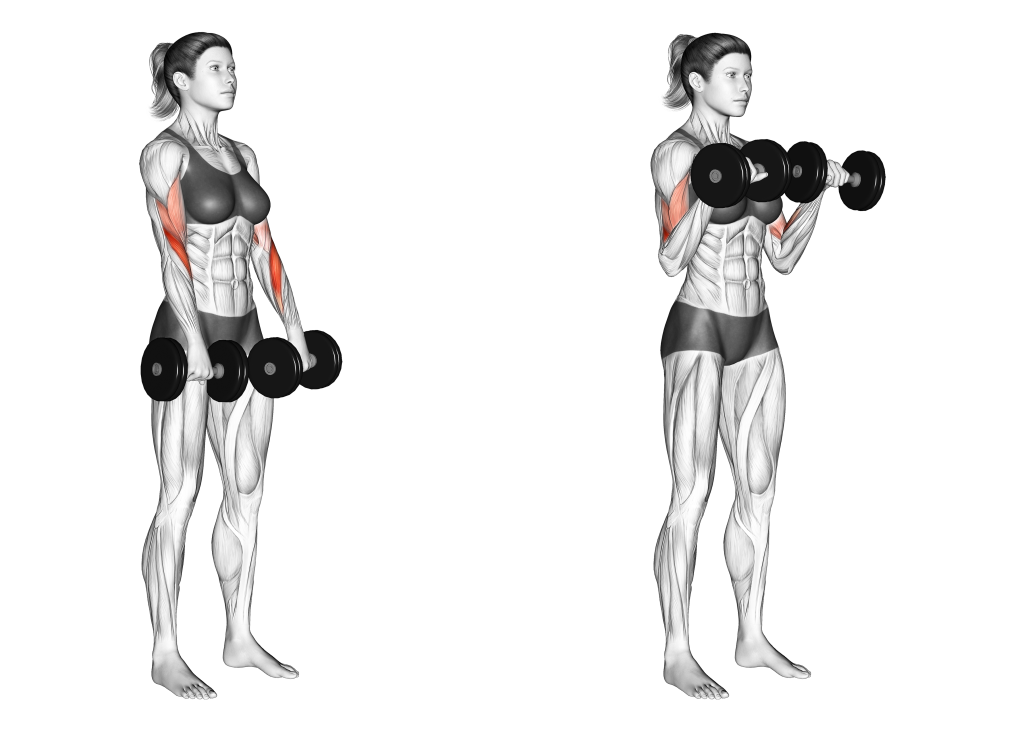
Ensuring that the elbows remain tucked against the torso, they will then bend the arms and raise the dumbbell upwards. The wrist should remain neutral as this action occurs, with the entirety of the forearm moving as a single unit.
Once at the limit of their range of motion, the lifter will return the dumbbells back to their sides in a slow and controlled manner, flexing their brachioradialis as they do so. When returned to the front, the repetition is considered to be complete.
4. Dumbbell Hammer Curls
A classic exercise that builds both the biceps and the brachioradialis - the dumbbell hammer curl is yet another dumbbell-based forearm exercise of the single-joint closed chain variety.
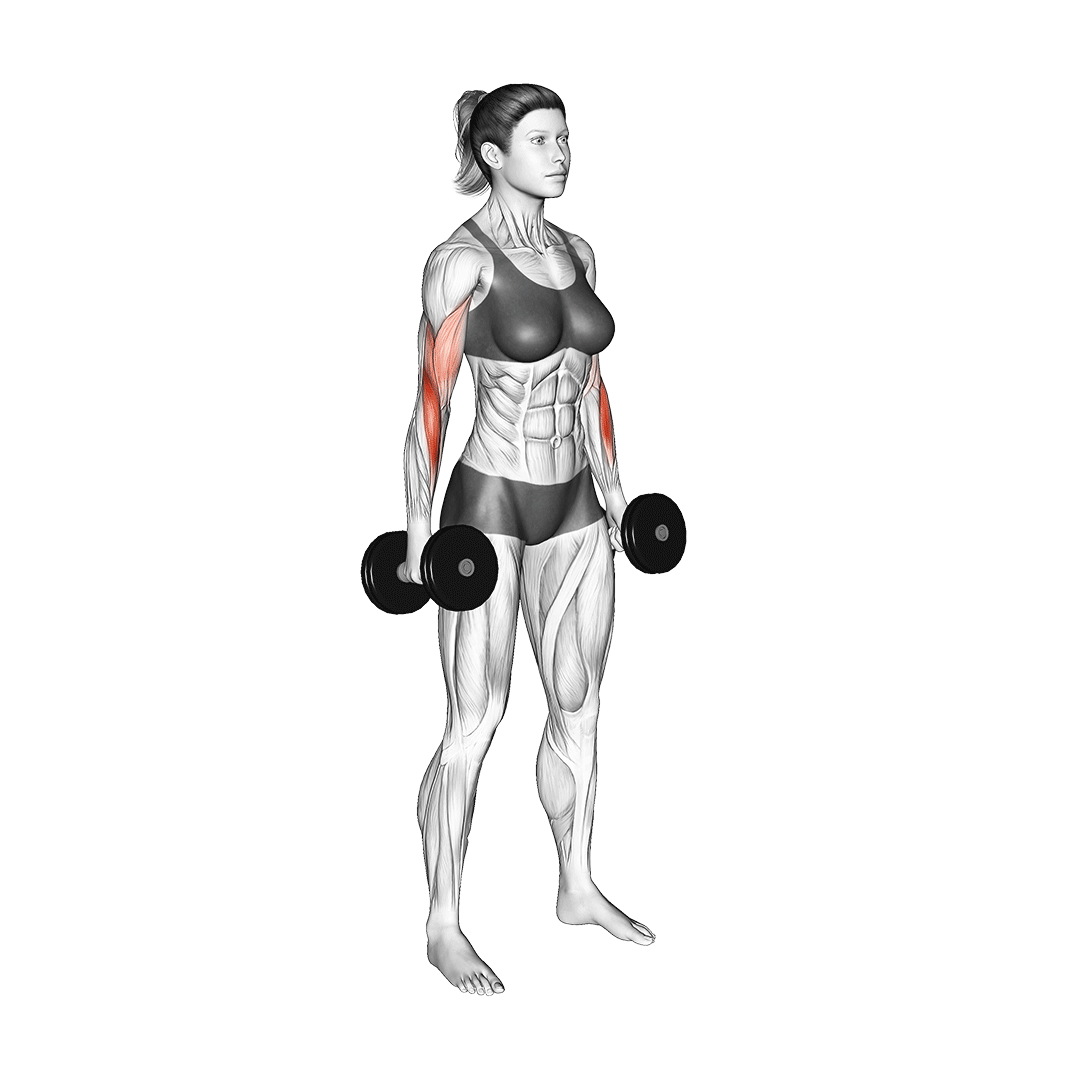
Unlike most other curl variations, the dumbbell hammer curl involves a neutral wrist orientation and is primarily performed for building the thickness and definition of the forearms, rather than solely that of the biceps.
Muscles Worked
Hammer curls target the biceps brachii alongside the brachialis and the brachioradialis.
Benefits as a Forearm Exercise
Dumbbell hammer curls are comparatively one of the best exercises for targeting the brachioradialis, as they allow for significant loading in an otherwise very safe movement pattern.
Furthermore, the hammer curl is excellent for strengthening the elbow and its ensuing flexion biomechanics, as the exercise targets all three of the elbow flexor musculature.
How-to:
To perform a repetition of the dumbbell hammer curl, the lifter will stand upright with a pair of dumbbells (or just one) held in a neutral orientation at their sides.
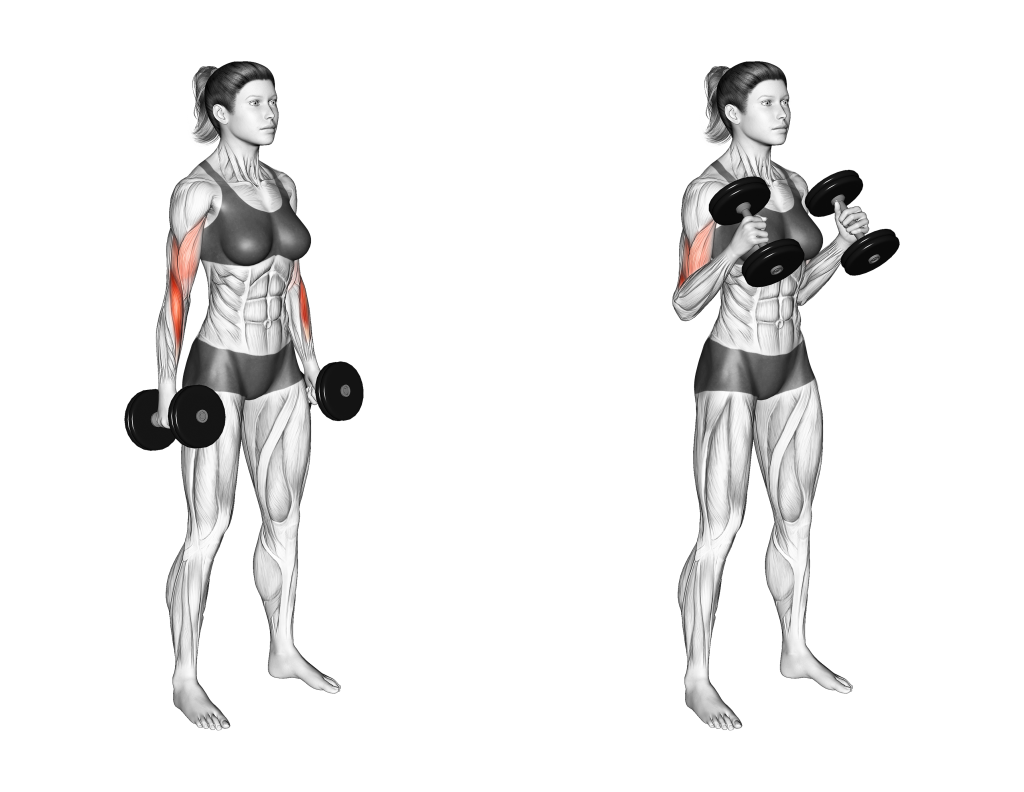
From this position, the lifter will bend at the elbows and contract their brachioradialis. The dumbbell will be raised upwards until it is parallel with the shoulders. The elbows should be kept stationary throughout the exercise.
To complete the repetition, the lifter will then slowly lower the dumbbell back to its original position.
5. Dumbbell Pinches (Pinch Grip Dumbbell Holds)
Although the pinch grip exercise is traditionally performed with a set of weight plates, using a dumbbell of sufficient circumference will also suffice.
Dumbbell pinches don’t target any single muscle group in the forearms, but instead work them in their entirety through isometric contraction. This means that no dynamic movement actually takes place, and the exercise is performed for a length of time with each repetition, rather than through a set movement pattern.
In technical terms, the dumbbell pinch is a closed chain static exercise targeting multiple muscle groups at once. It is primarily performed for building grip strength and endurance.
Muscles Worked
Dumbbell pinches will work the entirety of the forearms in a static capacity.
Benefits as a Forearm Exercise
The main advantage to performing dumbbell pinches is that they build grip strength and endurance - two vital capabilities in nearly any form of exercise.
Unlike plate pinches, dumbbell pinches will create a more radial position of the fingers, helping to create a more functional grip workout. This furthers their applicability to athletic training or for individuals that wish to strengthen their grip for activities outside of the gym.
How-to:
Performing pinch grip dumbbell holds is quite simple.
All that is needed is for the lifter to select a dumbbell of sufficient weight and circumference to fit their hands, and to grip it by one end (rather than the handle).
The lifter will hold the dumbbell in this manner for as long as needed to complete the set, ensuring that no other muscles but those of the forearms are involved.
6. Farmers Walk With Dumbbells
While not necessarily a forearm isolation exercise, performing farmers walks with sufficiently heavy dumbbells can more than tax the grip strength of the lifter.
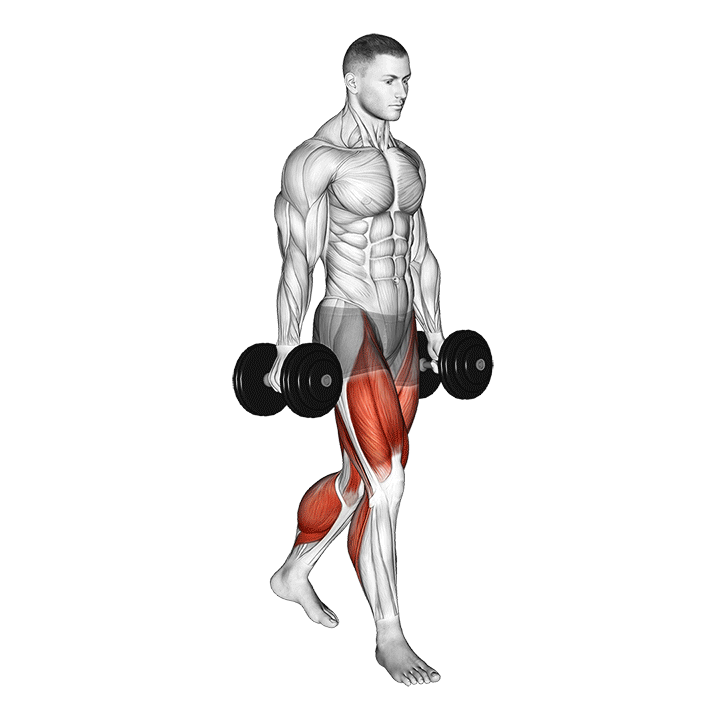
The farmers walk is a multi-joint open chain exercise involving the lifter carrying a pair of heavy dumbbells as they walk. This targets not only the forearms, but also the trapezius and the lower body as well.
Muscles Worked
The farmers walk works the entirety of the forearms in a static capacity, but also targets the trapezius and the muscles of the legs.
Benefits as a Forearm Exercise
The main benefit to doing farmers walks is its functional development of not only the forearms, but also the legs and parts of the upper body. This is perfect for athletes or individuals who work physically intensive jobs.
Furthermore, the farmers walk builds significant work capacity in the forearms, and can be programmed according to the needs of the lifter - be it grip strength or endurance.
How-to:
To perform the farmers walk, the lifter will stand upright with a pair of dumbbells held at their sides.
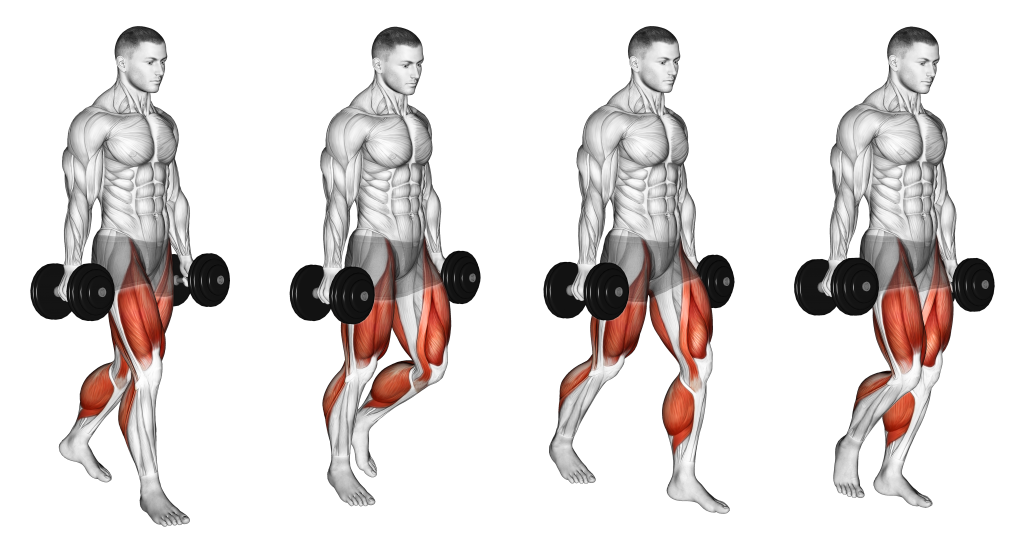
All that is needed is to walk for a predetermined length of time or distance, ensuring that the core is contracted and each step led by the foot and knee.
Anatomy of the Forearms and Which Exercises to Pick
The forearm muscles are divided into three groups:
- The Brachioradialis
- The Flexors
- The Extensors
Each muscle group is used for moving the fingers and forearms in differing motions, and as such will require distinct exercises to target them.
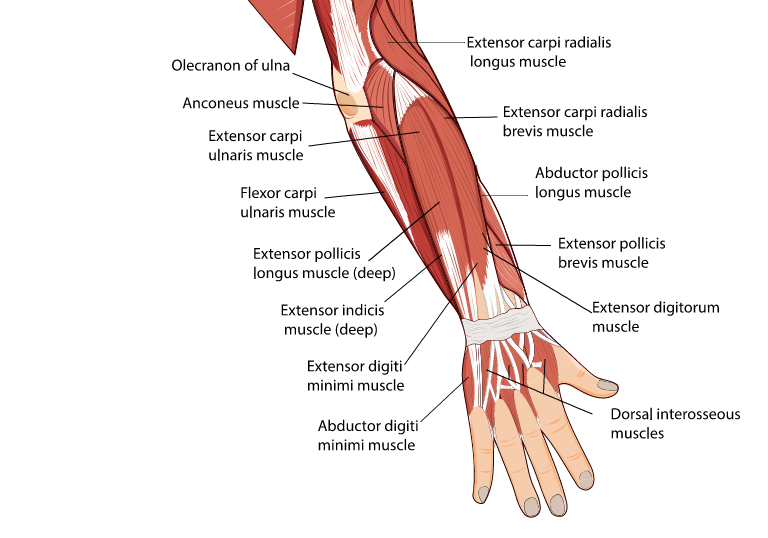
The brachioradialis is primarily targeted by exercises that feature forearm flexion at the elbow.
Conversely, the extensor muscles are primarily targeted by exercises involving pronation and flexion of the forearm.
On the other hand, the flexor muscles are worked by movements involving extension of the hands, or otherwise by those that involve supination of the forearm.
Frequently Asked Questions (FAQ)
How do I Make My Forearms Bigger With Dumbbells?
In order to grow your forearms with a set of dumbbells, you’ll need to target the three main muscle groups therein - the extensors, flexors and the brachioradialis.
To do this, we advise performing one separate exercise for each individual muscle group.
Do Dumbbell Curls Help Build the Forearms?
Not necessarily.
Conventional dumbbell curls primarily work the biceps, and don’t involve any significant dynamic contraction of the forearm muscles. This means hypertrophy will be minimal at best, and that you’ll be better served with more isolated forearm exercises.
How Do You Get Bigger Forearms and Wrists?
Unfortunately, it isn’t quite possible to build bigger wrists.
What is possible, however, is to develop the muscles of your forearms. The most efficient and safe way to do so is to make use of low-impact resistance exercises - a few good ones being the wrist curl or hammer curl.
References
1. Stiggins, Chuck Ed.D.; Allsen, Phil Ph.D.. EXERCISE METHODS NOTEBOOK #40: Reverse dumbbell wrist curl. National Strength and Conditioning Association Journal 11(1):p 82-82, February 1989.
2. Berit Kristin Labott, Heidi Bucht, Mareike Morat, Tobias Morat, Lars Donath; Effects of Exercise Training on Handgrip Strength in Older Adults: A Meta-Analytical Review. Gerontology 30 October 2019; 65 (6): 686–698. https://doi.org/10.1159/000501203
3. Stoppani, James., Stoppani, Jim. Jim Stoppani's Encyclopedia of Muscle & Strength. United Kingdom: Human Kinetics, 2015. Pp 67 “Forearm Training Guidelines Based on Training Split” ISBN: 9781450459747, 1450459749
